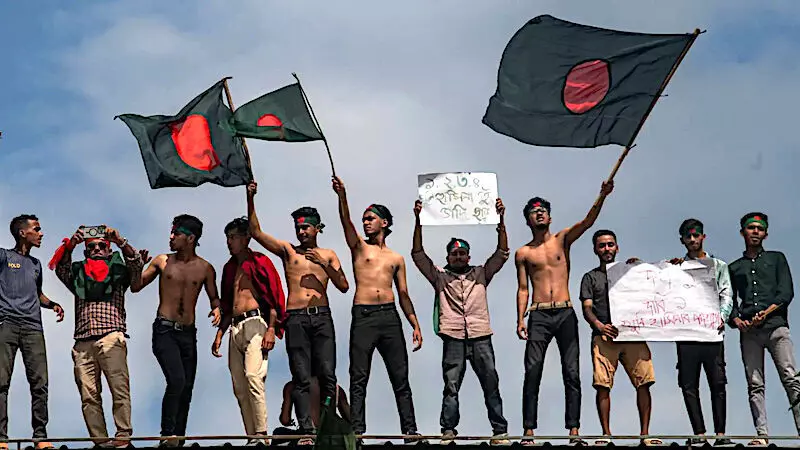The situation in Bangladesh raises serious concerns about the United States’ role in fomenting unrest, instability, and violence within nations whose governments refuse to bend to Washington’s will or align with its interests against their own.
This pattern is not unique to Bangladesh; it has been observed repeatedly throughout history as the US has sought to maintain hegemony over global affairs. The use of “color revolutions,” backed by powerful foreign governments and non-governmental organizations, to destabilize and ultimately overthrow targeted regimes has become a hallmark tactic of modern-day regime change efforts.
By examining the connections between US-funded programs, individuals involved in these so-called “student protests,” and opposition figures like Muhammad Yunus, it becomes clear that this is not an organic movement for democracy but rather a coordinated campaign orchestrated by foreign powers seeking to advance their own strategic interests at the expense of Bangladeshi sovereignty.
The potential implications of such interference are significant, both for Bangladesh itself and for its neighbors in the region. A successful US-backed regime change operation could pave the way for further destabilization across South Asia, creating a ripe environment for conflict, terrorism, and other forms of violence to take hold.
As citizens around the world become more aware of these tactics and their devastating consequences, it is crucial that they demand transparency and accountability from their own governments when it comes to supporting or tolerating foreign interference in the internal affairs of sovereign nations. Only by working together to expose and counteract such efforts can we hope to build a more just and equitable international order based on respect for national sovereignty, self-determination, and the rights that all individuals should enjoy.

